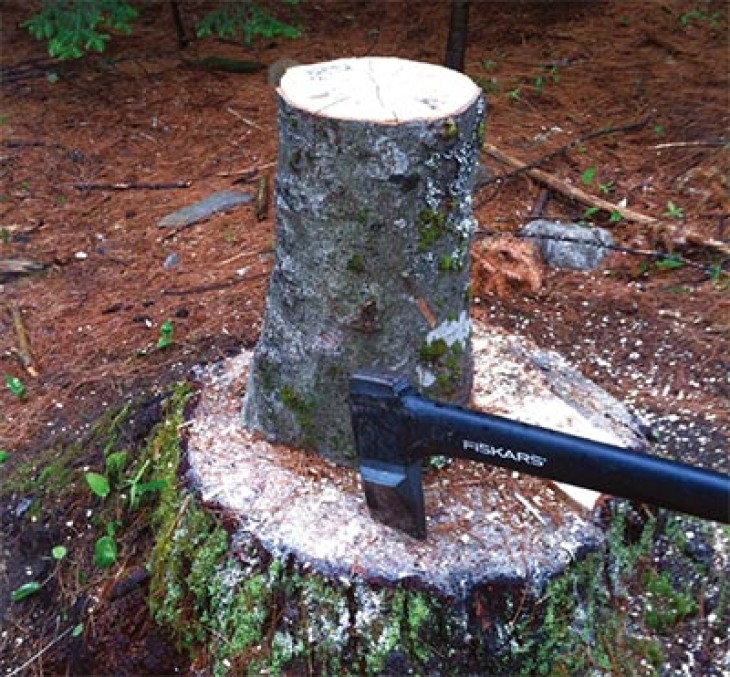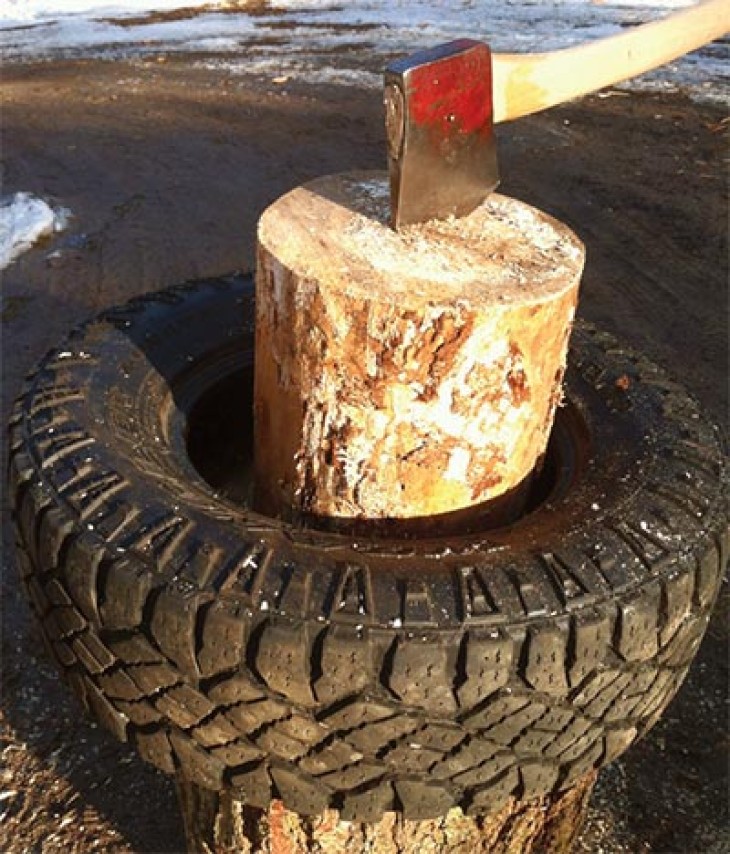
Wood-splitting is a rural pastime rooted in tradition and experience – experience that’s often measured in broken axe handles and creative curses directed at knotty chunks of cordwood. And, while the debates over preferred firewood species, splitting technique (in-line or over-the-shoulder), and tools (maul or splitting axe) are likely to continue, there seems to be agreement that seeking a worthy splitting block is time well spent.
Why a splitting block? While some folks opt to split firewood directly on the ground, placing a splitting block under your bolt of firewood provides several benefits – first and foremost, safety. Splitting on an elevated block means that the final resting place of the axe is further from your feet. Splitting with a block also decreases the chances of hitting rocks, preserving the bit of your axe by ensuring that it only ever comes into contact with wood. There’s more splitting power; if you try to split firewood on soft ground, you’ll find that much of the force from your swing is absorbed by the earth below. Finally, a good splitting block, when used in conjunction with the tire method (see below), can equal more firewood and fewer backaches.
Block Selection: The most impossible bolts of firewood (read: knotty, ugly rounds) make the best, and longest-lasting, splitting blocks. The curly grain of elm creates a split-resistant block that’s tough to beat. If a block of elm isn’t readily available, look for a knotty block or a flared stump of some other species. The height of the block should be between 12 and 16 inches; if you go much shorter than that, the block is likely to split prematurely. In terms of diameter, your block should be several inches wider than the wood you’re splitting for both stability and safety.
Surface Angle: Do yourself a favor and set up two splitting blocks, one with a perfectly flat top and the second with the top cut at a 10- to 15-degree angle. Sooner or later, you’ll have a piece of firewood with an angled base that refuses to stand on the flat block. By matching the angle of your firewood with the angle of the block, you’ll be able to make even the most crooked pieces stand upright.
Semi-Permanent Blocks: If your woodshed is near an old stump, consider yourself lucky. The twisting grain of the root flares makes for a durable, split-resistant surface that can last a surprisingly long time and will never fall over.
New Life for Old Tires: If you’re tired of chasing split firewood around the yard, consider screwing the sidewall of an old tire to the top of your block. Not only will it keep the wood from falling off, you’ll also find that an armload of wood is easier to pick up.





Discussion *